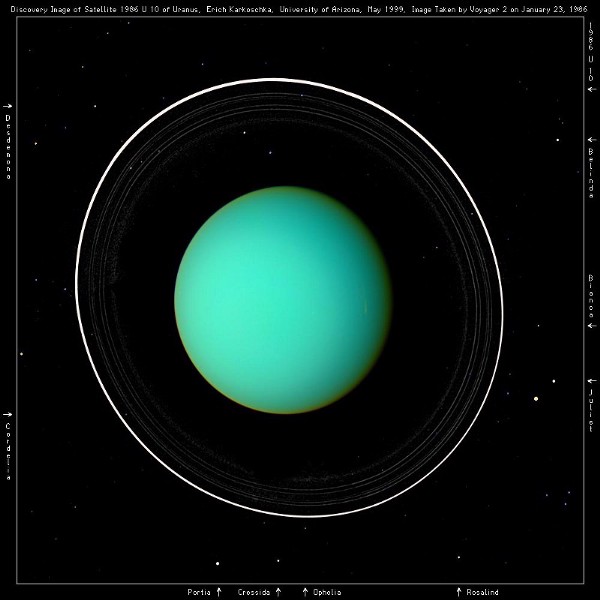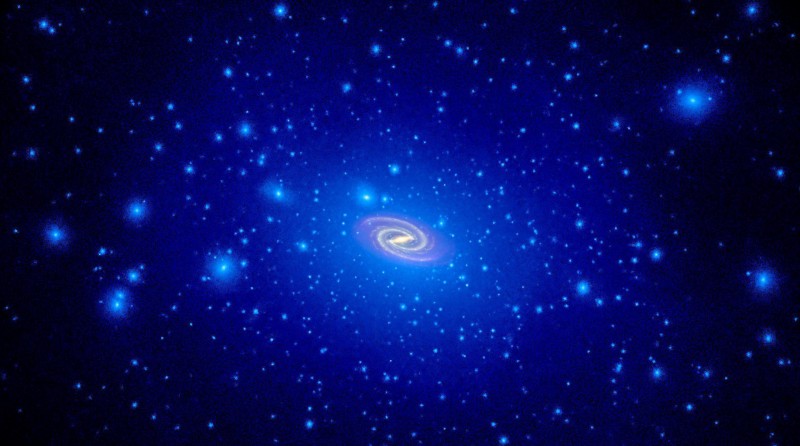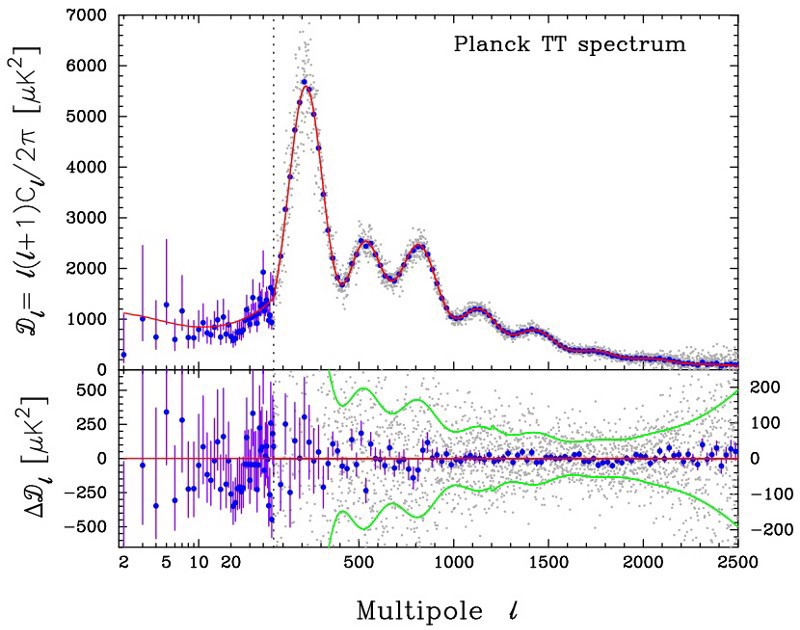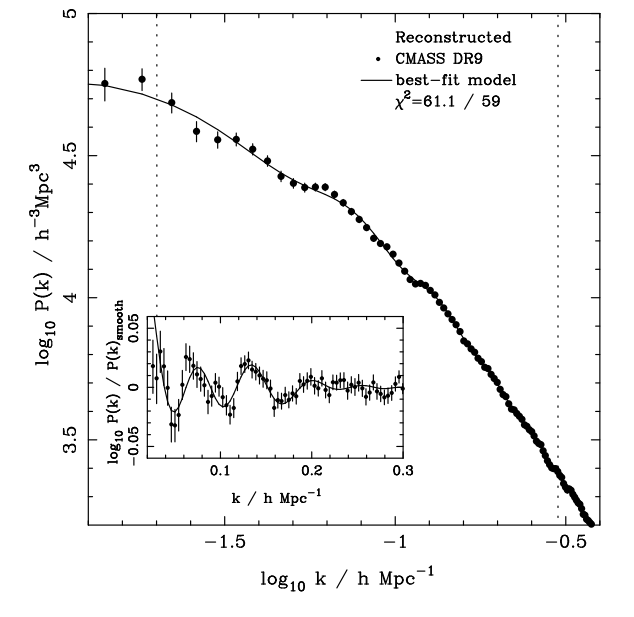Ask Ethan # 94: Is it possible to do without dark matter?
Is it possible that our problems speak of the shortcomings of the theory of gravity?
I soon became convinced that all theorizing would only be an empty exercise of the brain, and consequently, a waste of time, if only you did not first find out what actually filled the Universe.
- Fritz Zwicky
At the end of the week I rummage through your letters with questions and suggestions. This week I liked most of all the letter containing the most other learning opportunities from Ryan Schulz, who asks:
In the latest issue of Discover, there was a long article on the radical theory of MOND and how its predictive capabilities do an excellent job with the task, and no one has yet found dark matter. I’m wondering what MOND is, is the theory acceptable, and if it’s so successful, why did we all hear about dark matter and not about MOND?
To understand what it is about, you need to go to the XIX century and discuss the problems that existed long before the problem of the “missing mass” (or “missing light”) that MOND is trying to solve: the problems of Uranus and Mercury.


')
The laws of gravity, developed by Newton in the 17th century, extremely successfully described everything to whatever they applied. From the movement of flying projectiles to rolling objects, from the weight of objects to the pendulum, from the buoyancy of the boat to the orbit of the moon around the earth - the Newtonian theory of gravity did not fail.
The three Kepler laws, special cases of Newtonian gravity, were applied to all known planets:
1. Each planet of the Solar system is drawn in an ellipse, in one of the foci of which the Sun is located.
2. Each planet moves in a plane passing through the center of the Sun, and for equal periods of time the radius vector connecting the Sun and the planet describes equal areas.
3. The squares of the orbital periods of the planets around the Sun are referred to as cubes of the major semiaxes of the orbits of the planets.

All known worlds obeyed these laws, and for hundreds of years no deviations were found. But with the discovery of Uranus in 1781, everything changed. The new planet moved in an ellipse around the Sun, but its speed did not match the predictions of the laws of gravity.
In the first 20 years after detection, she moved faster than predicted. In the next 20-25 years, its speed corresponded to the calculated one. Then it slowed down even more, and the speed fell below the calculated one.
Was the law of gravity wrong? Maybe. But perhaps there was still some matter, some type of invisible, or dark, matter that was pulling Uranus and leading to these deviations of the orbit.

It turned out that it is. After the war, theorists between Urbain Jean Joseph Le Verrier and John Couch Adams, during which they made independent predictions about the location of the new planet, on September 23, 1846, Le Verrier’s calculations were confirmed by Johann Gottfried Halle and his assistant Heinrich Louis D'Arré. Neptune was discovered, the first object whose existence was predicted by the gravitational influence of its mass.

On the other hand, the innermost planet, Mercury, as a result of the increased accuracy of observation instruments and measurements accumulated over centuries, began to show strange deviations from the laws of gravity. Kepler predicted that the planets should move around the Sun in ideal ellipses with a focus in the Sun, but only in the absence of other masses that influence and perturb this system. But there are other masses, and Mercury does not move along an ideal closed ellipse. Ellipse makes precession.

Using the laws of gravity of Newton, we can take into account the influence of all the planets, including Neptune, and the precession of the terrestrial equinoxes. After that, we find only a small difference between observations and predictions - a precession of 43 "for a hundred years, or at 0.012 ° for a hundred years. But this is not an accident.
So what's the deal? Is there still an unknown mass, possibly internal to Mercury? Or is it a problem in the law of gravity? The tedious search for the theoretical planet Vulcan, located even closer to the Sun, was conducted. But there was no Vulcan. The decision came in 1915, when Einstein put forward his general theory of relativity.

Fast forward to the 1970s and consider the observations first made by Vera Rubin. We observe separate galaxies - in particular, located to us by an edge - and measure their speeds. We look at one side of the galaxy, and we see that it moves towards us (blue shift), and then we look at the other, and it moves away from us (red shift) - all due to the rotation of the galaxy. We expect to find that the inner stars of the galaxy rotate faster, and that the speed of rotation decreases with distance from the center. But we see something completely different.

Instead, the rotational speed of the galaxy remains constant as it moves away from
center. Why is that? There are two possibilities: either the laws of gravity require correction, or it is necessary to assume the existence of an additional, invisible mass.

MOND, or MOND - Modified Newtonian Dynamics, was first noted in 1981 by Moti Milgrom, who decided that if we change the effect of Newton's laws with very small accelerations - with fractions of a nanometer per second squared - we can get exactly such rotation curves. The same change will be able to explain the rotation of galaxies, from small to large. And MOND still copes with it very well.

Dark matter, on the other hand, suggests that in addition to the normal particles of the Standard Model, all normal matter from “protons, neutrons and electrons” that make up almost everything we know is a new type of matter. To explain this rotational phenomenon, a large halo of matter was proposed that does not interact with the light, does not crumple with itself, and does not interact with ordinary matter. This is the idea of dark matter.
She can explain these rotation curves, but not as well as MOND. Numerical simulations of the halo, obtained from the simplest models of dark matter, do not quite coincide with the observations: the halo is too dense in the center and too “fluffy” along the edges. (Technically speaking, they are more isothermal than expected). If we only had these rotation curves, then MOND would be a clear leader.
But we have a whole Universe.

If you propose a new theory in exchange for GR, which in turn replaces Newton's gravity, you need to meet three conditions:
1. It must reproduce all the successes of the previous theory.
2. It must explain the new phenomenon (or phenomena) for which it was developed.
3. It must make new, unique predictions that could be tested experimentally or by observations.
And the success of the previous theory of mass.

Gravitational lensing of starlight using mass, including strong and weak lensing. Shapiro effect . Gravitational time dilation and redshift. The platform associated with the Big Bang and the concept of an expanding universe. The movements of galaxies in clusters and clusters of galaxies on a large scale.
And in all these cases, the MOND effectively falls through, either without making predictions, or with predictions that conflict with the data. If you say that MOND is not a complete theory, but a description of one phenomenon that can lead to a complete theory, then continue to hope. Many people are working on expanding the MOND, which would explain these observations, but so far there is no success, including the theory of TeVeS (tensor-vector-scalar gravity), MoG (modified gravity) and others.
But if you leave the laws of Einstein's gravity and just add a new ingredient, cold and dark matter, not experiencing collisions, you can explain everything, including new, interesting details.


Fluctuations in relic radiation, including “acoustic peaks”, which are not able to exist without some form of dark matter, can be explained.

You can explain the nature of clusters, visible in the large-scale structures of the Universe, including the large curve at the top, and fluctuations in it, if we accept that dark matter is five times larger than normal.
And, most interestingly, you can make a new prediction: when two clusters of galaxies collide, the internal gas should warm up, slow down and emit X-rays (above, pink), and the mass (blue) visible through gravitational lensing should follow dark matter and separate from X-rays. rays. This prediction was born from observation and lasted the last ten years, serving as indirect evidence of the existence of dark matter.

So, Ryan, MOND does not win against dark matter: it still explains the rotation curves of galaxies better than dark matter. But this is not yet a physical theory, and it is incompatible with the whole set of observations that we have. We hear about dark matter, because it can give us the whole Universe, without contradiction. MOND may be the key to a more complete theory of gravity, and many hope someday to deduce the phenomenology of MOND from dark matter itself - a rather ambitious goal!
But now MOND does not cope in cosmological terms, which makes it much less preferable than dark matter. She has her followers and she deserves a job, but for now this is not a suitable alternative. But make its version, which:
1. Reproduces all the successes of GR
2. Explains a set of new phenomena
3. Makes new testable predictions,
and I will sing in a different way, as any correct scientist will have to do.
Source: https://habr.com/ru/post/397899/
All Articles